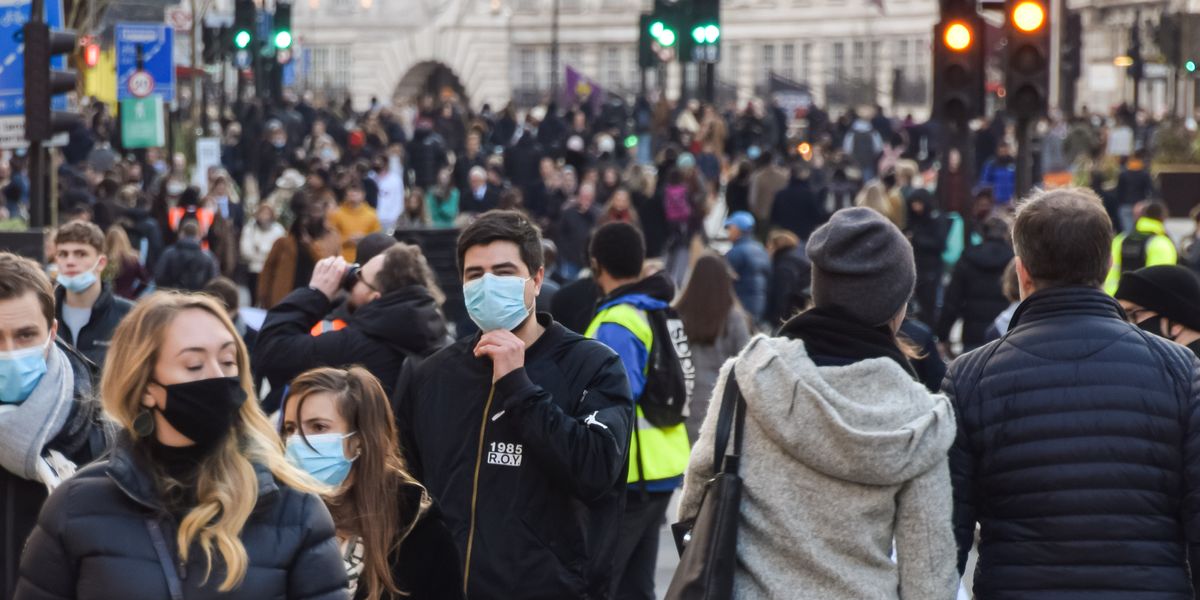In the aftermath of the Covid pandemic, health experts are now warning that the consequences of the pandemic may result in more deaths than the Covid virus.
Studies and evidence suggest that the lockdowns, compulsory mask wearing, schools closing and the cancellation of hospital appointments resulted in a mental health crisis, prevented children from receiving vital education and increased risks for people with cancer and heart disease.
The safety measures put in place by the pandemic seem to have put people at a greater risk of developing and suffering from other viruses and diseases. There has been a notable increase in cases of leprosy, measles, polio, monkeypox, hepatitis and super colds.
- Substantial increase in type 1 diabetes cases in children and teenagers since COVID-19
- Thousands of undetected type 2 diabetes cases identified during COVID-19 pandemic
This increase is likely due to individuals being unable to socialise with others, meaning people were not exposing themselves to common germs, a decrease in the numbers receiving vaccinations due to concerns about Covid jabs and reduced hospital capacity.
Dr Antonia Ho, from MRC-University of Glasgow Centre for Virus Research, has led studies that analysed the effects of lockdowns on health worldwide. Dr Ho believes that the Covid lockdowns and restrictions resulted in “reduced circulation of seasonal viruses”.
These factors mean that people were not encouraging their immune system to create a natural defence to fight off future infections which is vital for everyone but particularly children.
Leprosy
Throughout the pandemic, a reduction in hospital tests and appointments allowed the leprosy virus, caused by the bacteria Mycobacterium leprae, to spread.
According to the World Health Organization (WHO), programmes which could have reduced leprosy cases were hindered and led to 37% less cases being detected in 2019 and 2020. In 2020, the Centers for Disease Control and Prevention (CDC) reported 159 new leprosy cases.
Due to the bacteria being slow growing, the illness develops extremely slowly and symptoms may not appear for decades after contact with the bacteria. Symptoms include discoloured skin, numbness, weak muscles, eye issues, nosebleeds and foot ulcers.
Measles
Approximately 95% of the population needs to be vaccinated for herd immunity against measles, a contagious yet preventable disease which previously caused epidemics every few years and led to the death of two million people, mostly children.
Vaccination numbers for measles has been continuously dropping since the Covid pandemic began. The CDC revealed that almost 40 million children did not receive their measles vaccine in 2021, increasing their risk of infection and death.
The UK, Greece, the Czech Republic and Albania used to be measles-free until the past few years.
The first sign of measles is cold-like symptoms and then raised red blotchy rashes that join together and typically appear on the face or behind the ears before spreading to the rest of the body.
Polio
The number of vaccinations against polio has also declined during the past few years to less than 95%. This is still above the 80% required for herd immunity but in poorer parts of the country the rate is as low as 37%.
In July 2022, an unvaccinated man in his 20s in New York was diagnosed with polio paralysis which was linked to a live vaccine, meaning he likely contracted the virus abroad. Officials then detected polio in New York sewage systems 70 times and the CDC reported that the virus may have been present in the city since April 2022. This was the first case of onward spread since 1993.
Although experts are unsure what caused the return, it is widely believed that lockdowns, limited access to vaccines and vaccine hesitancy contributed to low vaccine rates. According to WHO, 6.7 million more children did not receive their third polio vaccine compared to 2019.
One in 200 infections of polio lead to permanent paralysis, usually in the legs. Symptoms include fever, tiredness, headache, nausea, stiffness of the neck and limb pain.
Monkeypox
An outbreak of monkeypox began as social restrictions ended and people across the globe started to emerge from lockdowns. There were 86,000 cases of the virus worldwide, including 30,000 in America.
It is believed that the virus spread amongst people in America due to declining immunity against smallpox, a virus from the same family as monkeypox, after vaccinations ended in 1972 as smallpox was eradicated.
Hepatitis
In 2021, there was a hepatitis outbreak due to low immunity caused by limited socialising which affected 1,000 people across 35 countries. It causes inflammation of the liver and led to the deaths of 22 children and left nearly 50 more needing liver transplants.
The outbreak was linked to a virus that typically did not cause sickness before lockdown as people had greater immunity. Most of the cases were in children under five who experienced diarrhoea and sickness before developing jaundice.
“Super” Colds
The Covid restrictions also reduced immunity for the common flu and cold and resulted in ‘super colds’. They first appeared in the UK in November 2021 with people presenting with flu-like and Covid-like symptoms.
Super colds are likely no worse than a usual cold but they affected people more because their immune systems became overwhelmed with germs when they emerged from lockdown.
Symptoms include a sore throat, a cough, migraines and similar symptoms to Covid such as aches, a fever and tiredness.
The CDC revealed that within the 2022 to 2023 season, there were more than 54 million illnesses and up to 58,000 deaths due to the flu.







